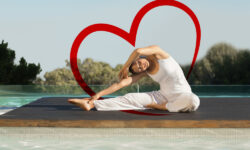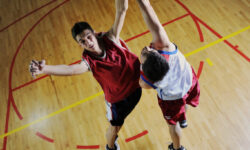Beth Shriever is Team GB’s BMX star who won a memorable gold medal at the Tokyo 2022 Olympic Games and then, just three weeks later won gold at the World Championships.
This was a young athlete who, until 2019, wasn’t even funded bu UK Sport to be on the British Cycling training programme. For a year, the athlete and her family did fundraising and crowd-funding activities to help get the cycling protégée to Olympic qualification events.
Training for muscle gain
Several things changed for Beth once she was accepted onto the programme. Working with a sports psychologist, she became mentally resilient and learnt to cope with all that life threw at her. She trained with the BMX men’s team to get strong and aggressive in her racing performances; she learnt how to match her nutritional intake with her energy needs. Most importantly, she learnt how to train in the gym so she was – in her words – ‘properly strong and powerful’.

In the process, Beth has changed the perception of how female athletes should train, particularly among young cyclists. In the past there was a belief, even among elite athletes, that women should train to ‘tone’ their muscles rather than build muscle mass. Muscle was considered to be ‘unfeminine’.
Be more Beth
What Beth, and other athletes across a range of sports, has done is to turn muscle into something desirable among women. Now, Instagram is full of female athletes showing their biceps with pride and sharing their secrets to achieving strong powerful bodies.
With that in mind, here are four basic bodyweight exercises that will help anyone – from elite BMX champions through to gym novices – to achieve the strength and muscular fitness to which they aspire.
Squat
For strong leg muscles you cannot go wrong with a regular squat routine. The amount and intensity will depend on you, but the basic move is as follows:
Stand with your feet hip-width apart. Push your butt back and bend at the knees to lower your hips toward the floor. Aim to end with thighs parallel to the floor and knees in line with your toes. Drive through your heels to push back to standing.
Add weights or add a jump to increase the workload.
Push Up
Chest, shoulders, upper back, biceps, triceps – they all get a workout with this favourite.
Get into high plank position on the floor. Your hands should be directly under your shoulders, slightly wider than your ribcage. Brace your core and bend at the elbows to lower your body to the floor with control. Make sure your elbows flare out no more than 45 degrees. Push back up to the top position. Elevate your hands on a bench, or drop to your knees if needed.
Lunges
For leg strength and stability, lunges are the perfect exercise. You can do dynamic (moving lunges) or static. For stability and to avoid knee injury, we recommend static lunges.
Stand with your feet hip-width apart. Take a big step back with one foot and lower your back knee down toward the floor to create a 90-degree angle with both knees. Shift your weight onto your front foot, first making sure your front knee is in line with your front ankle. Then, drive through the heel of the front foot and engage the glutes to push yourself back up to standing until both legs are extended. Without moving your feet, bend your front knee to start your next rep. Keep your shoulders down and back throughout the movement. Do all reps on one side before switching to the other.
Plank
This move helps to develop your core and engages your abdominal muscles. Variations include side planks or one-armed planks.
Set-up on the floor in a plank position with your elbows bent and directly beneath your shoulders, forearms flat on the floor. Extend both legs behind you and support your weight on your toes. Brace your core and squeeze your glutes to hold the position. Don’t allow your low-back to sag toward the floor. Start by holding the position for 10 seconds, gradually building up to 60 seconds or longer. If you can’t hold a straight-leg plank, begin with your knees on the floor.
For all of these exercises, ensure you perform each one with correct form. Set yourself achievable but challenging targets and increase those targets to reach new levels of fitness.
For guidance or help with all of these exercises, do talk to the Outlooks or free weights gym team at Kelsey Kerridge.







